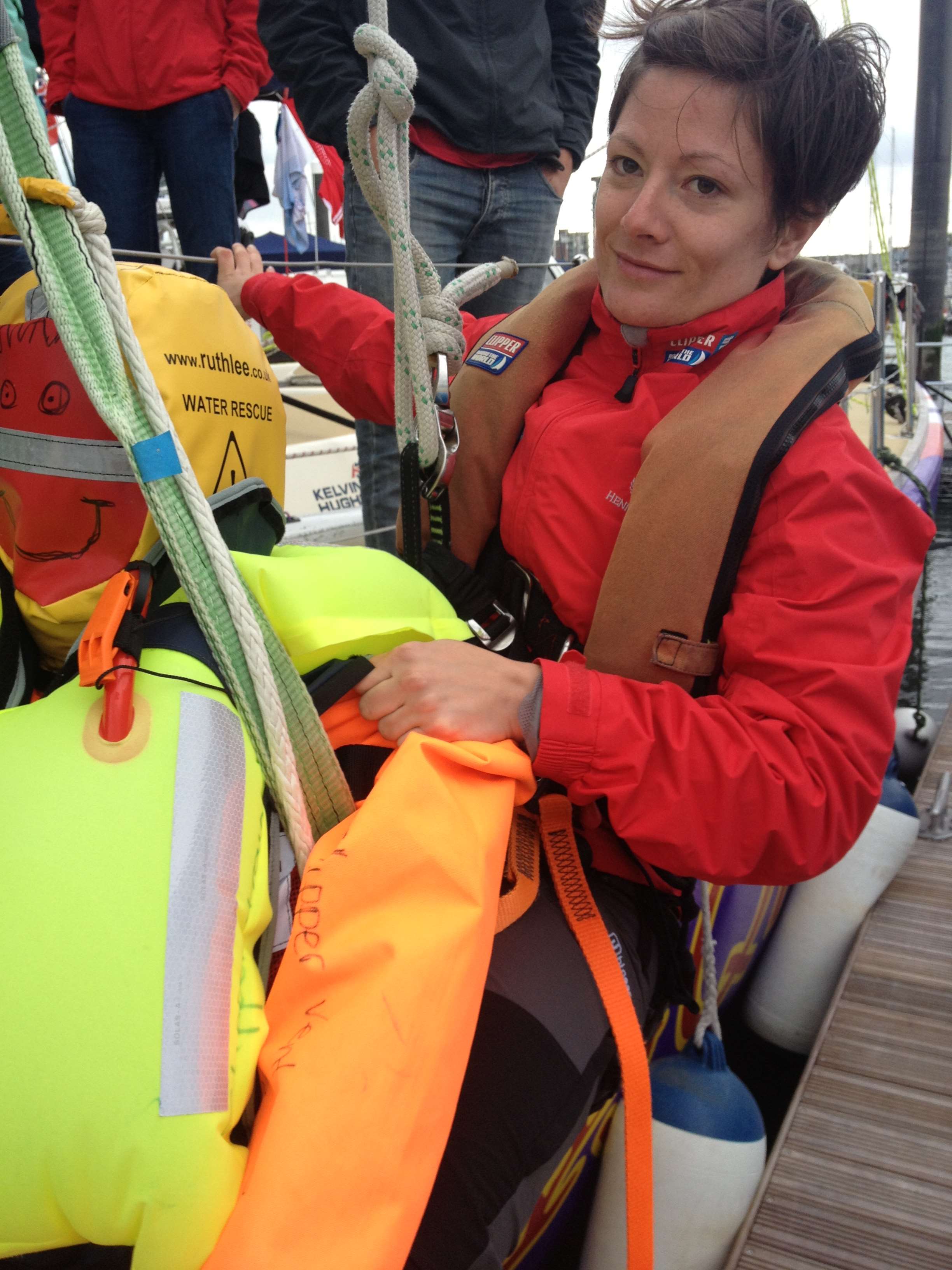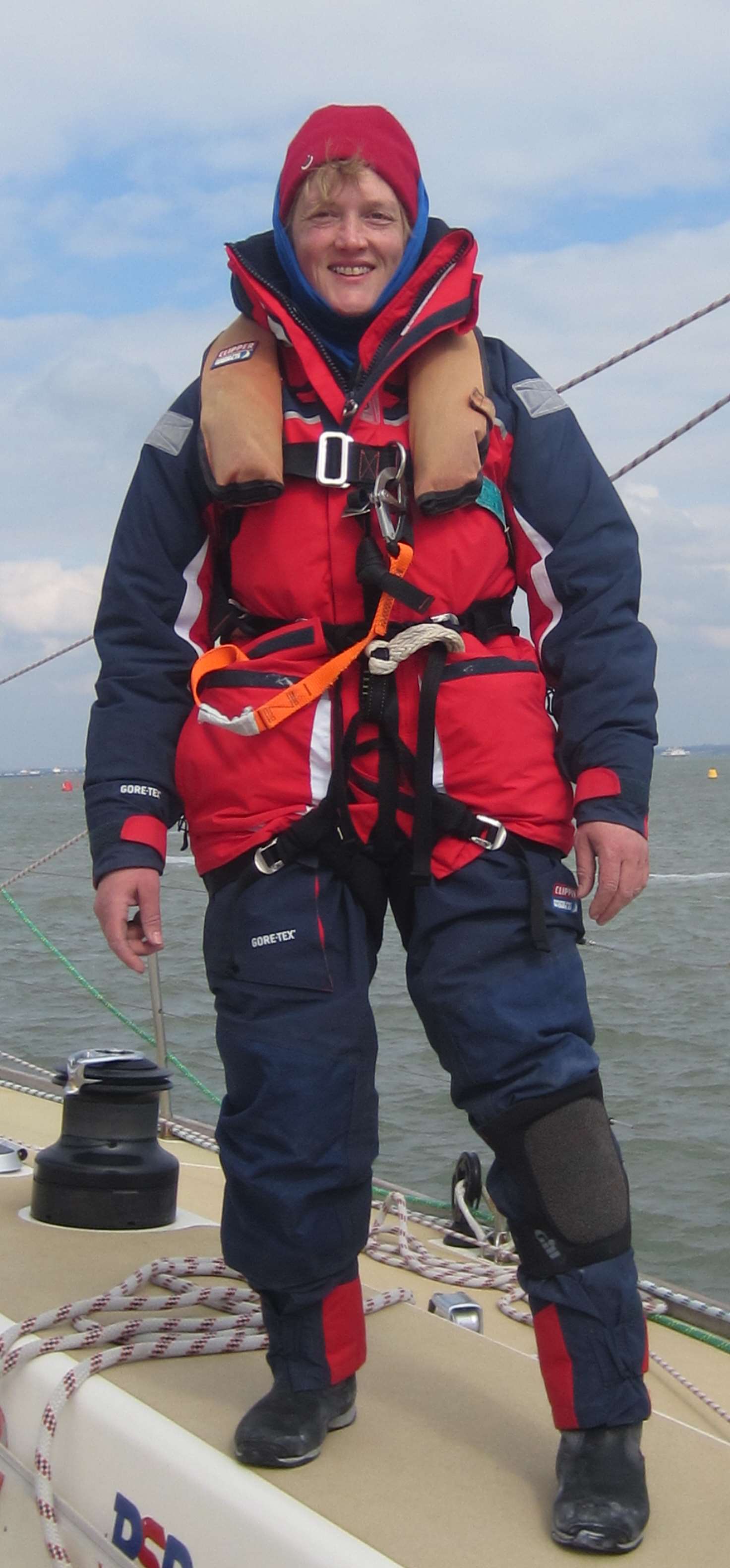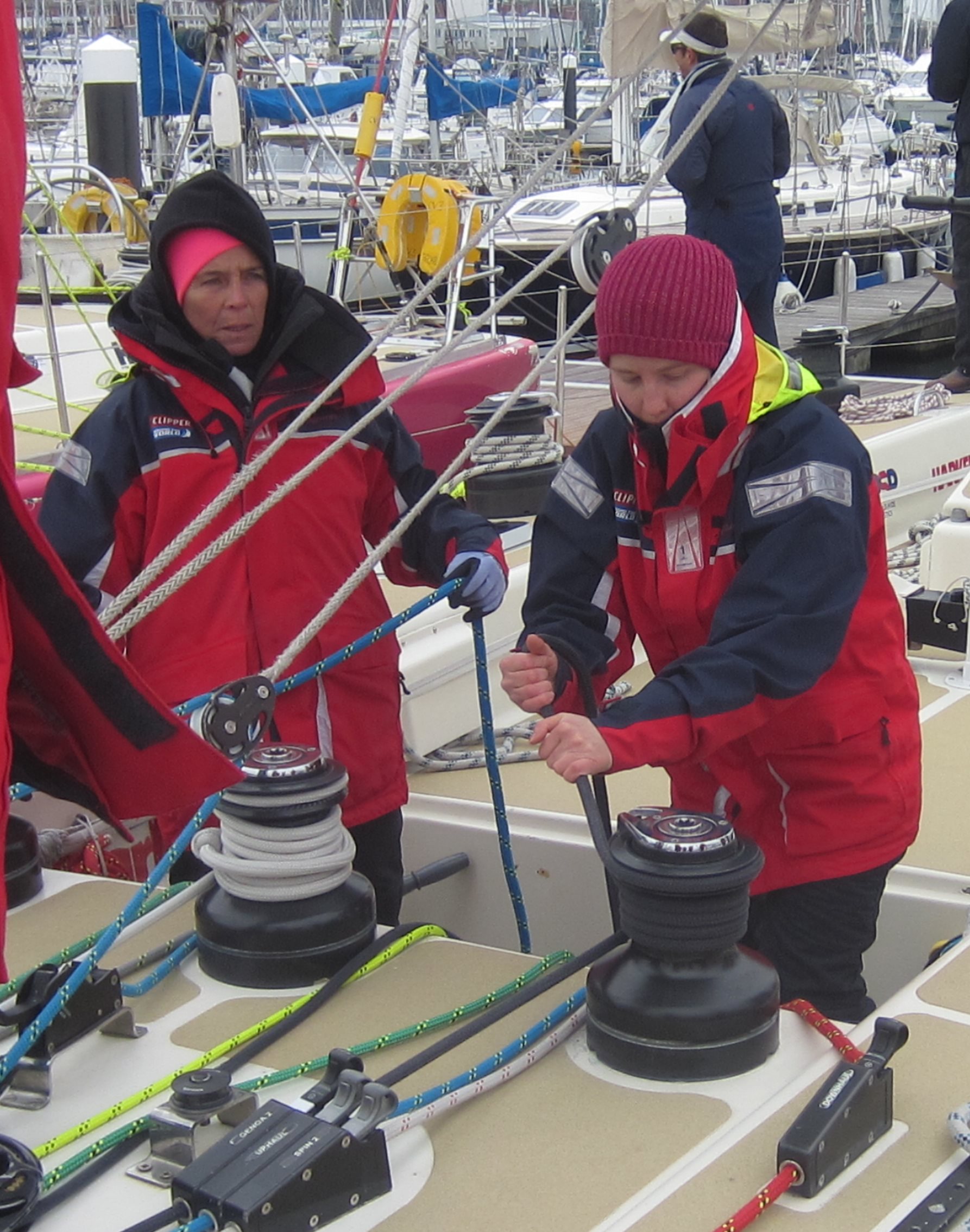Going overboard
“Man overboard!” – that’s a phrase you really don’t want to hear, much less be the person in the water! Though I guess if you are the person in the water you would be quite glad to hear it – at least it means that the crew has seen you and the boat will be coming back to rescue you.
The reality is that in order to rescue someone from the water, you have to be in the water too. They need to be rescued as horizontally as possible, with support under both their shoulders and their knees, so that they don’t later collapse from hydrostatic shock. This is caused by their blood rushing away from the vital organs because of the sudden release of water pressure from their legs.

Piers being rescued by Ali, photo by Kong Chian Toh
He’s upside down
We had Nico in the harness with Claire on the winch. One moment he was standing on deck, the next all you could see were his feet as he dangled upside down over the side of the boat. He remained upside down all the time he was struggling to get Piers in the right position to be rescued, despite exhortations to the contrary. Apparently he couldn’t hear. Maybe we should have tried Italian! Most of us were mortified, though no-one more than Claire. “Omg I’ve killed Nico” she said she had thought. You really can’t see what is going on, so communication is key. The only person who seemed unfazed by it all was Nico, oh and Piers, but nothing seemed to bother him!
Lessons learned
- if you’re on the winch do everything very slowly and carefully – remember there’s a person on the other end, not a sail;
- if you’re wearing the harness, it needs to be tight enough so that the support it gives you is around your waist, not your thighs. Nico’s was too loose; hence him being upside down.
Keep your pants on

In the pants of power, a different course
Before I got the chance however, Piers went for another swim. A moment’s panic. Man overboard. And I’m in the galley. At least I’m not in the head. What do I do? Then clarity. You’re wearing the harness. You’re going over the side. Go and get yourself attached.
It’s not as bad as I had feared. It’s a bit like abseiling; at least the first bit is. You have to trust that the halyard is going to hold you then lean back and walk your feet down the side of the boat. That’s where the analogy ends. I’ve never abseiled over the sea, into pitching waves. While abseiling I’ve never had to grab, attach and manipulate something while suspended in mid-air. On the other end, Claire was measured and controlled, and didn’t dunk me.
On the other end

Winches, with a person on the other end
